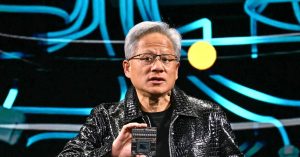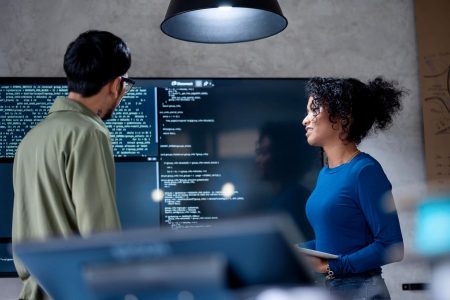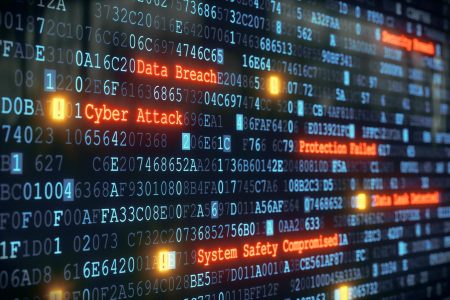Lila Kee is the General Manager for GlobalSign‘s North and South American operations, as well as the company’s Chief Product Officer.
Lately, it seems that whether I’m in a meeting at work or grabbing a coffee with friends one topic consistently comes up in the conversation: artificial intelligence. Is it a good or a bad thing? Will it destroy jobs? How do we distinguish AI-generated images from genuine images?
Some of these conversations can lean toward the negative because there are, of course, genuine concerns about how far AI will go and what it means for the world.
Where Government And Industry Initiatives Stand Today
Currently, an area of fierce interest and discussion is establishing appropriate guardrails for AI, especially as to how nations can ensure that it is used properly and for the betterment of humanity. Legislation such as the European Union’s AI Act, first passed last year, identifies different categories where AI plays a role, assigning a risk value to each and defining requirements to regulate each respective category.
Here in the U.S., a new roadmap for regulating AI was unveiled in the Senate on May 15. Although it may not be as far-reaching on the regulatory side as recent EU laws, it will serve to guide various committees considering future legislation about the technology. Of the proposed roadmap, Senior U.S. Senator Charles Schumer said, “Our democracy may never recover if we lose the ability to differentiate at all between what is true and what is false, as AI threatens to do.”
The challenge of differentiating what is true versus false—real-world vs. AI—is just one of the areas being addressed by industry initiatives, enhancing the effectiveness of government legislation.
Examples of industry initiatives include the World Economic Forum-sponsored AI Governance Alliance and the Coalition for Content Provenance and Authenticity (C2PA), a global organization aiming to prevent misinformation and disinformation in digital media. (Full disclosure: GMO GlobalSign is a C2PA member.) Industry-led initiatives are important adjuncts to government regulation and policy that attempt to keep pace with advances powered by AI technology.
Given the pace of AI innovation, governments will struggle to keep laws and policies relevant unless they rely on two key principles.
1. Don’t reinvent the wheel, as many existing laws and policies are still applicable to the potential harm AI might cause. Governments will never keep pace with AI innovation alone.
2. Heavily rely on industry experts to develop standards and implementation frameworks that leverage existing tried and true security technologies.
AI Governance In Action
These key points were top of mind at a recent event I attended, sponsored by the Boston Global Forum (BGF), titled “Governing the Future: AI, Democracy and Humanity.” The event was facilitated by BGF cofounder Nguyen Anh Tuan and attended by leaders in academia, technology and public policy. Dr. Alondra Nelson, Harold F. Linder Professor at the Institute for Advanced Study, also spoke about the importance of ensuring policy innovation keeps up with AI innovation.
My takeaway was that policymakers and stakeholders shouldn’t overly fret about not having a deep understanding of the technology stack behind AI. Instead, they should focus on how AI could help sustain and enhance global initiatives impacting human rights.
Industry initiatives, for example, are focusing on developing standards to distinguish between AI-generated and original images. The AI Governance Alliance advocates for traceability in AI-generated content; this could be achieved through various watermarking techniques. Similarly, C2PA, an industry-led coalition, focuses on the traceability of original and real-world captured content.
Like many security solutions, one must address possible security pitfalls through the lens of the entire ecosystem an image may traverse. In the case of C2PA, sponsorship and participation involve collaboration among media, platforms, hardware and other companies involved in the full lifecycle of media generation, modification and distribution.
This doesn’t mean reinventing the wheel. C2PA’s technical specifications include the use of several existing technologies. X.509 digital certificates, for example, provide images with a cryptographically assured user or device identity and point-in-time traceability. X.509 certificates attest to the identity of users, devices or applications, ensuring only the correct, authenticated entity is associated with the content in question. This feature also enables access controls to make sure only authorized entities can use a system, AI or otherwise.
The government has a role in ensuring industry-led initiatives are implemented in ways that safeguard our democratic principles and enhance humanitarian justice. That role should focus on policies and laws that guarantee the right to safe and effective use of AI, avoid algorithmic bias that could lead to discrimination, ensure our privacy laws are upheld and always inform relying parties if AI is being used to make any impactful decision.
Leveraging tried-and-true technologies will be key to providing the necessary guardrails for implementors to ensure compliance with these key principles.
In summary, a two-pronged strategy is essential to ensure the democratization of AI. Government policies and legislation, combined with industry initiatives that leverage existing security technologies based on open standards tailored to AI applications, offer the best chance to mitigate the dangers of AI misuse and create an inclusive environment for all of humanity.
Forbes Technology Council is an invitation-only community for world-class CIOs, CTOs and technology executives. Do I qualify?
Read the full article here









